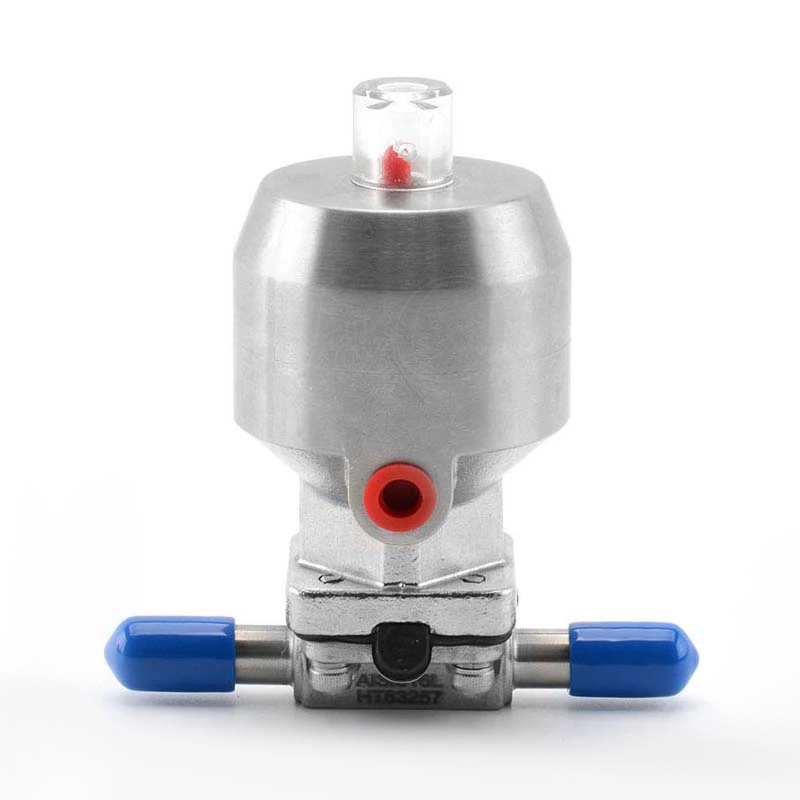Working Principle And Characteristics Of Pneumatic Diaphragm Valve
Working principle and characteristics of Sanitary Diaphragm Valve
Features of pneumatic diaphragm valve
1. The biggest difference between the diaphragm valve and other valves is that it adopts a stuffing box-less structure; the rubber diaphragm can completely isolate the corrosive medium in the flow channel from all driving components, thereby eliminating the "running and risk" of ordinary valves. , dripping, leaking" and other disadvantages.
2. Depending on the surface of the inner cavity of the valve body of the rubber diaphragm valve, there are a variety of rubbers to choose from. Therefore it has excellent corrosion resistance.
3. Because the flow path of the diaphragm valve is smooth and the flow resistance is small, a larger flow rate can be obtained.
4. This valve consists of valve body, valve cover, valve disc, valve stem, diaphragm and other driving parts. Because the seal is an elastic rubber diaphragm. Therefore, it also has better sealing and minimum closing force.
5. The opening and closing of the valve is achieved by rotating the handwheel. The diaphragm valve is marked with a color display on the upper end of the valve cover that allows you to see the open or closed position of the valve to indicate the opening and closing stroke of the valve. When the handwheel is placed clockwise, the handwheel will move downward, and the valve disc will drive the diaphragm down to cut off the passage; otherwise, the valve will open and the color will be revealed.
Working principle of pneumatic diaphragm valve: Fluorine-lined valve, also known as fluorine-lined plastic corrosion-resistant valve, is to place polytetrafluoroethylene resin (or profile processed) on the steel or iron valve pressure-bearing parts by molding (or inlaying) method The inner wall (the same method is applicable to the lining of various pressure vessels and pipeline accessories) or the outer surface of the valve internal parts is used to make various valves and pressure vessels by utilizing its excellent performance in resisting strong corrosive media. To put it simply, fluorine-lined valves use lining technology for all places within the valve body that can be reached by the medium. The lining materials of fluorine-lined valves are generally fluorine plastics such as fep (f46) and pctfe (f3), which can be applied to various concentrations of sulfuric acid, Pipelines for hydrochloric acid, hydrofluoric acid, aqua regia and various organic acids, strong acids, strong oxidants and other corrosive media have the advantages of corrosion resistance, non-scaling, and difficulty in growing microorganisms, ensuring the purity of the transportation medium. It has more excellent chemical properties and chemical stability than other plastics. It is a material that saves and makes up for the inability of non-ferrous metals and various alloy metals to solve anti-corrosion, sealing and other aspects.
